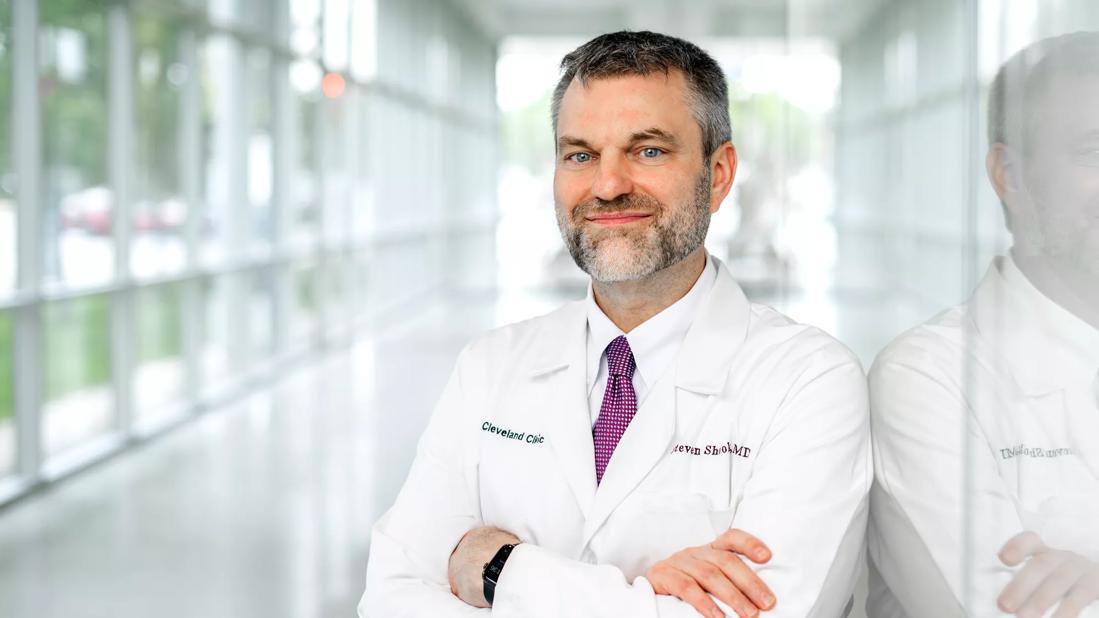Adopting a standardized electronic checklist for vital patient data eliminated unnecessary work and added valuable time at the bedside.

Neurologist Steven Shook, MD, MBA, noticed his residents struggling while preparing for daily pre-rounding.
Advertisement
Cleveland Clinic is a non-profit academic medical center. Advertising on our site helps support our mission. We do not endorse non-Cleveland Clinic products or services. Policy
“I’ve watched residents spend a significant amount of time searching through the electronic health record (EHR) while prepping for pre-rounding,” notes Dr. Shook. “That’s valuable time that we would rather spend with our patients.”
For pre-rounding, the resident gathers the vital patient data to inform and guide the discussion among the healthcare team to determine the best care options. Oftentimes, the resident searches several areas within the EHR to collect the pertinent information. A 2008 ICU study showed a daily average of 1342 data points per patient entered into the EHR. This volume of data, coupled with limited time, takes away from patient care.
As part of his training technique, Dr. Shook tasks residents to come prepared to discuss their patients’ critical, quality considerations for daily rounding since these details can easily be overlooked during this busy timeframe. It eventually became apparent that the residents were accessing several parts of the EHR to collect these vital details.
Dr. Shook adds, “The extensive amount of time and effort it took was staggering, and the inconsistencies and the potential to miss clinically significant information was concerning.”
As the Lead for Virtual Health at Cleveland Clinic, Dr. Shook has extensive knowledge and experience with digital tools designed to support patient care. Additionally, as the former Neurological Institute’s Quality Improvement Officer, Dr. Shook has a heightened awareness of the quality and safety regulatory and reporting requirements indicative of optimal patient care. These collective experiences pointed him toward an electronic solution to strengthen the delivery of high-quality, safe care.
Advertisement
Exploring options led him to colleague and neurologist Allison Weathers, MD, FAAN, Associate Chief Information Officer. Their initial discussions about how to best capture vital patient information in a user-friendly format resulted in the Neuro Quality Checklist.
One of the first priorities of the project was to evaluate the EHR’s current functionality to determine how patient quality and safety data was captured.
“We quickly learned that there was no easy clear path to view quality-specific patient data,” explains Dr. Shook. “These are the details we need to know about every patient on a daily basis in order to deliver high-quality care.”
Knowing that there were opportunities to optimize the EHR’s capabilities by consolidating these data points into a comprehensive, efficient view, Drs. Shook and Weathers defined the critical components required to populate the checklist.
Dr. Weather’s explains, “We applied the Nudge Theory concept to create a tool that makes it easy to do the right thing — it had to be easy to find, intuitive, show relevant information and impact clinical care.”
With the clinical components defined, they turned to clinical analyst Balakrishna Mudavath, PAHM, for his technical expertise.
“Having worked with several EHR modules, I was able to draw from my previous work to quickly identify the requested items needed for the checklist,” says Mudavath.
His approach combined elements from other modalities into the EHR’s core functionality. This involved scripting and implementing rules on the back end to have the most needed items appear in a concise format.
Advertisement
Mudavath continues, “By pulling these various components together, providers now have a side-by-side view of all the relevant clinical information. It’s a dynamic process that keeps the information current.”
Launching the new electronic checklist proved effective: all the critical data presented in an efficient view while eliminating unnecessary work.
To measure effectiveness, providers were shadowed while using the checklist. The observations showed a baseline of 10 minutes of EHR activity for each patient. Further monitoring indicated that the checklist was accessed 2,714 times with an estimated savings of 27,140 minutes, or 452 hours.
According to Mudavath, “Less clicks means that residents aren’t scouring through the EHR to find what’s needed. There is a certainty that the checklist is providing a clear picture of the patient’s condition and care over the last 24 hours.”
For Dr. Weathers, the outcome is clear: “We made it easier for providers to quickly access the information they need to do the right thing.” She adds, “Making this tool a reality was an iterative process only possible through active, engaged partnerships among clinical and technical experts.”
Dr. Shook agrees, “This experience is an excellent example of multidisciplinary teams coming together to improve quality, increase efficiency and most importantly, getting us back to why we got into medicine — spending more face-to-face time with our patients and working with them to improve their outcomes.”
Advertisement
Advertisement

Combined expertise, collaboration and technology lead to several improvements

This technical solution expedites the patient’s ED to admissions process

Cleveland Clinic uses data to drive its AI implementation strategy

Cleveland Clinic’s roadmap to recovering critical digital assets stems from strategic planning and preparedness

The Friends of Cybersecurity program bridges innovative technology solutions with mitigating security risks

Protecting patient data and privacy while preventing unnecessary risks

The infant fever care path is an interactive, step-by-step tool within the electronic health record that reduces high variability among standard practices to ensure safe, quality care at all Cleveland Clinic locations

Cleveland Clinic providers shifted to one-click ordering to simplify the workflow while increasing visibility of patient-specific recommended wellness screenings